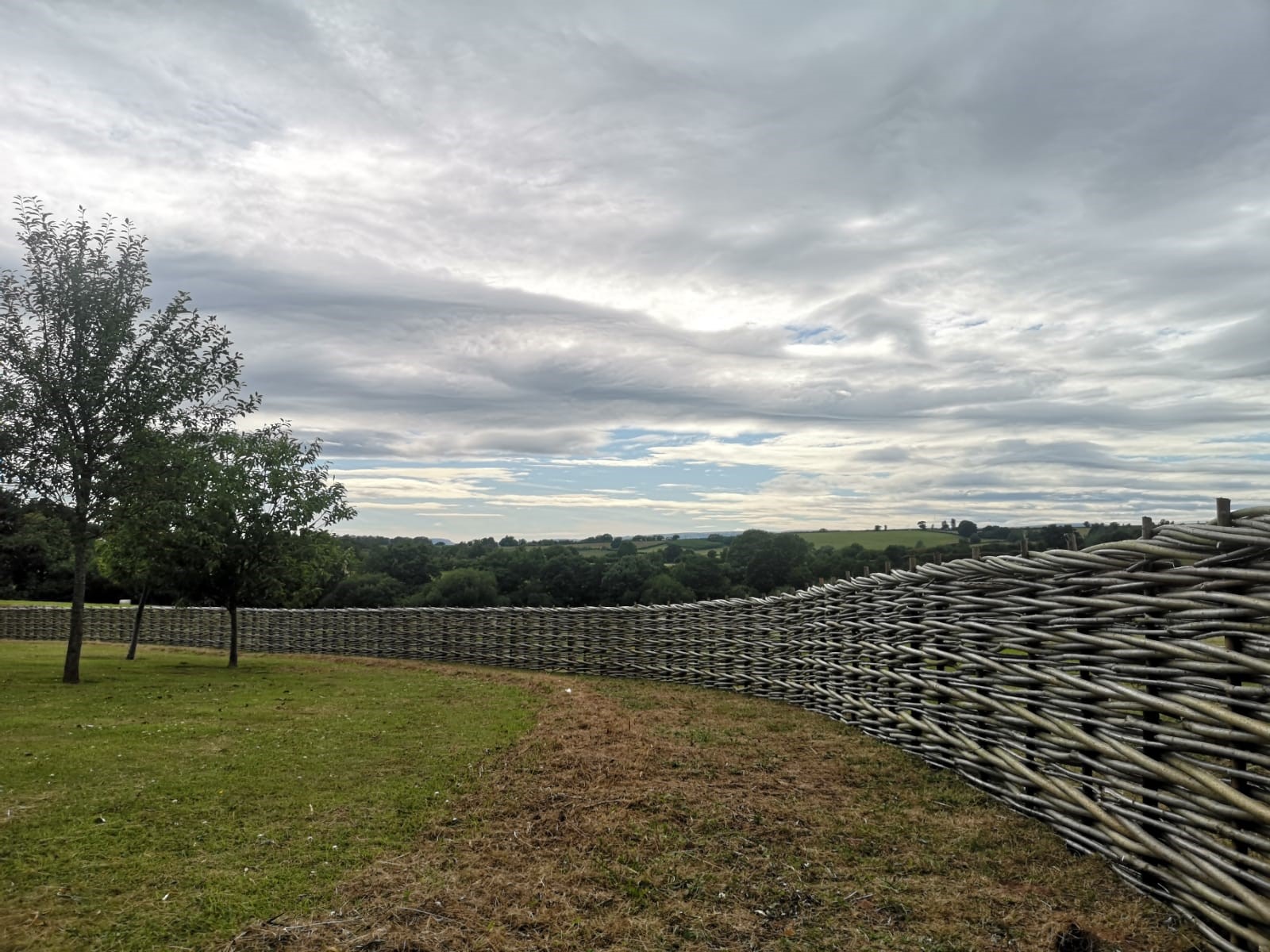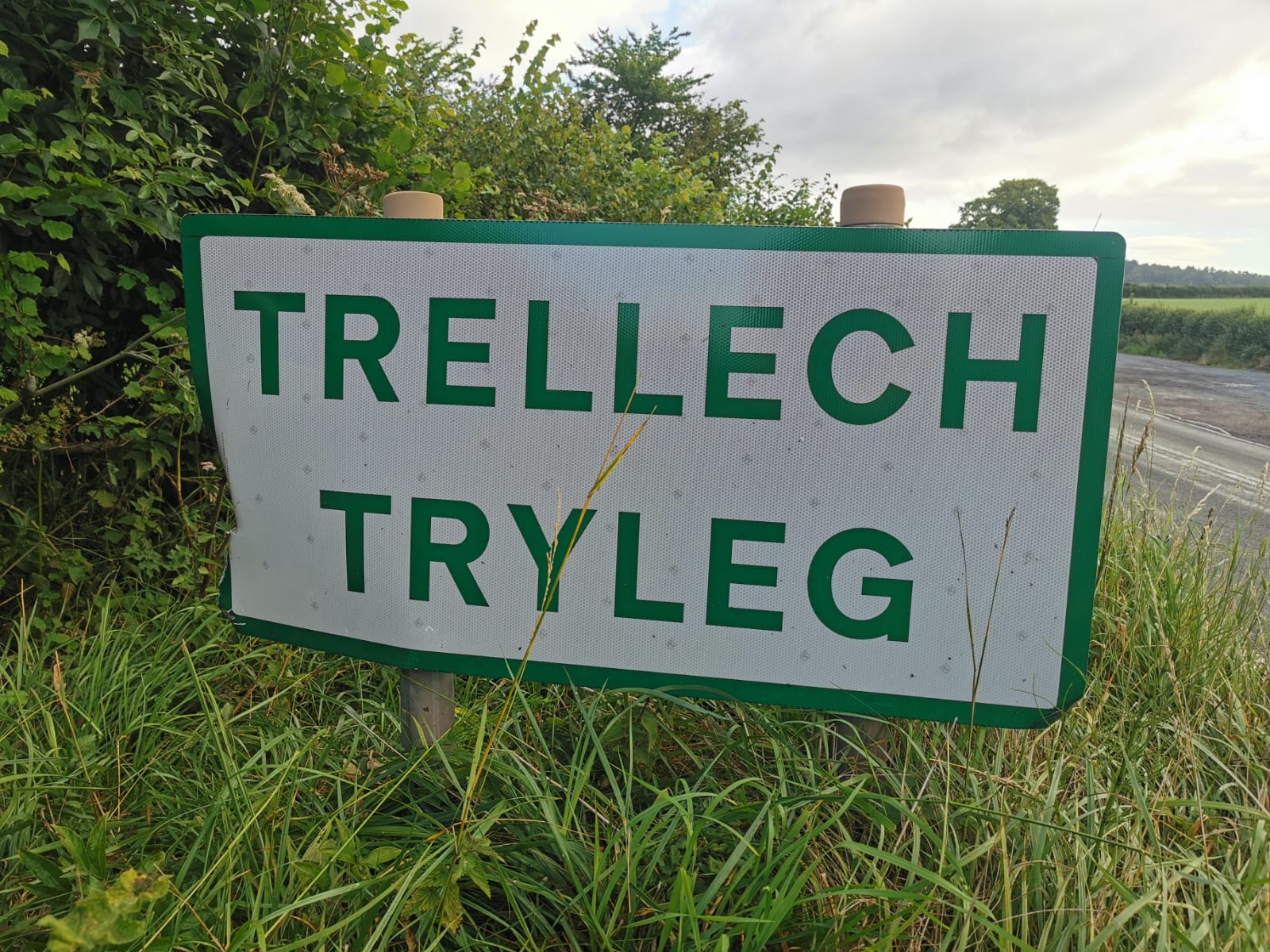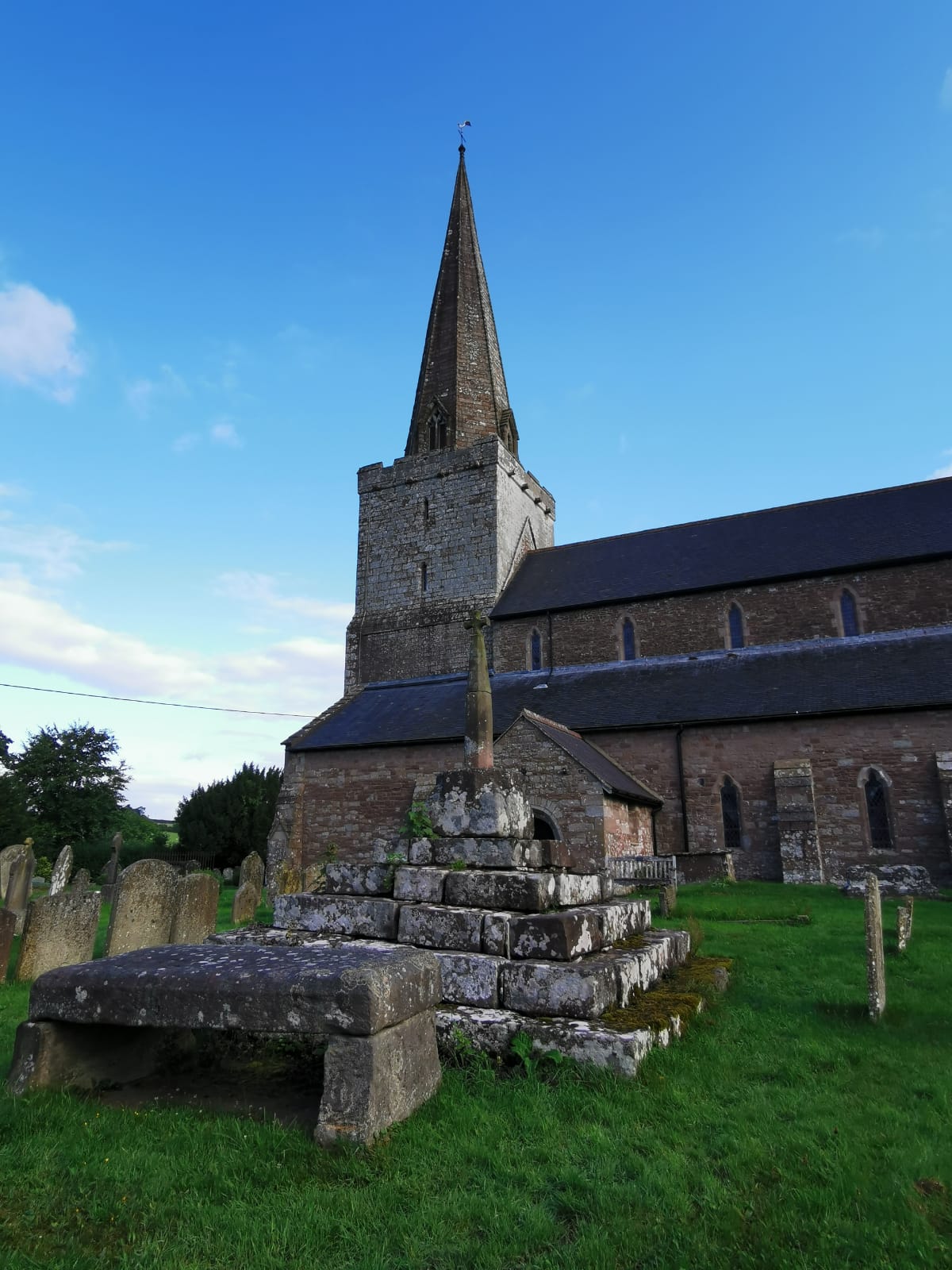Most of our guests come for a holiday but some come to work. Imogen and Christian Halbert from Oxfordshire near Blenheim Place spent three days here during which time they created a beautiful woven fence at a property in Cwmcarvan.
The 70 metre-long continuous fence was created using sustainable willow branches which will last 10-14 years. Their company is called Wonderwood.
They stayed in the Sugar Loaf cottage with their two dogs and Imogen says it was the perfect location for them with stunning views and a nice sofa to relax on after their hard day of willow weaving.
Cwmcarvan is a village about 3 miles beyond the village of Trellech which is north of us on the Monmouth road. It is a village with several claims to fame not least the fact that no-one seems to agree on what it should be called.
Signs leading into the village vary: one reads Trelech with one ‘l’, another Trelleck with a ‘ck’, as well as Trellech and Tryleg – the official spellings in English and Welsh.
You will also see Treleck and Trelleck on local houses, while an old county map reads Trylegh.
A tea-towel on sale locally offers 22 options, including Treleeck and Trillet.
The name derives from three standing stones in the village which date back to the Neolithic or early Bronze Age. “Tre” in Welsh is a hamlet or farmstead, while “llech” is slates or stones but it could also be a corruption of “Tri”, which is the number three in Welsh.
There is as much confusion surrounding the origin of the three large upright stones as the name of the village. Locally they are called Harold’s Stones and legend has it they refer either to the Roman leader Harold who defeated the ancient Britons at the site or King Harold, the last Saxon king, who defeated the Celts in the area three years before he lost his eye, his life and his kingdom in 1066 to William the Conqueror.
The problem with both stories is that the three stones were erected around 1,500 BC, well before both battles took place.
The stones are off to the right of the B4293 just before you enter the village from the south. A gate will lead you to the stones which form a line 39 feet long, on a NE-SW axis. The most southerly stone is the largest, at 15 feet high, and bears 2 cup marks on the south face. The angle of the cup marks means they would face the midwinter sunset.
Remarkably by the mid-13th century, Trellech was one of the biggest towns in Wales, with a population of 10,000. Bigger, in fact, than Chepstow or Cardiff, and a quarter the size of London. It had grown rapidly due to the availability of local iron and charcoal which were exploited by the powerful Anglo-Norman de Clare family to produce weapons for their military advances in Wales.
However, all that was to change. The town was largely destroyed in 1291 as a result of a raid. The Black Death struck in 1340 and again in 1350. Later Owain Glyndŵr and his men sacked what remained of the town in the early 15th century further reducing its size and importance.
The impressive Church of St Nicolas in the centre of the village reflects the fact that it once served a much larger community. The present building dates from the 13th and 14th centuries but the preaching cross in the churchyard and font may be much earlier.
Opposite the church is the Lion Inn which was originally a coaching inn, brew house and pig farm completed in 1580. Many of the original features of the brewing cellar and pigsties remain. It is a traditional pub with real ales, food, open fires, and exposed wooden beams. It will take you about 10 minutes to get there by car from the farm.
And the reference to a wardrobe in the headline? Well I’m sure there are plenty of wardrobes in Trellech but probably none with an entrance to Narnia but if you visit this village of many names you will enter a place with a fantastic legacy and who knows what creatures those three stone pillars will turn into once Aslan has breathe life into them. What a history they would tell!
Photographs of the village by John Davis. The fence images provided by our guests Imogen and Chris

The best looking fence ever!

Two of the names given to the village – one English, one Welsh

Harold’s Stones were in place long before Harold came along!

St Nicholas Church is much bigger than you’d expect for a little village but there lies the history……

The Lion does a roaring trade as the mane attraction in the village
